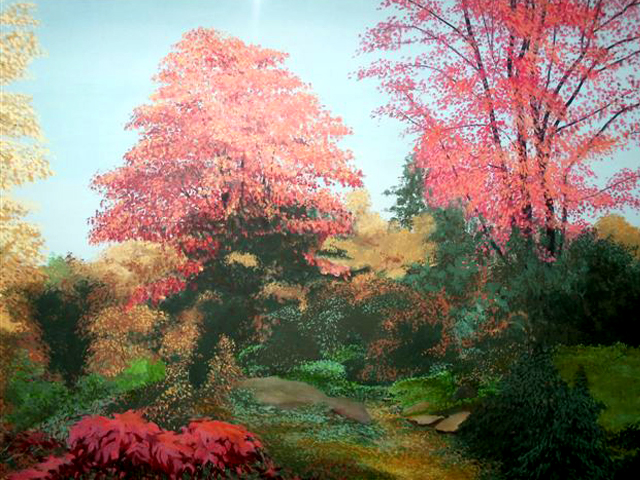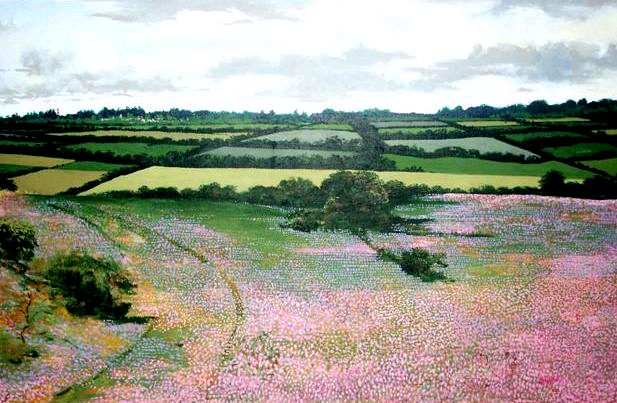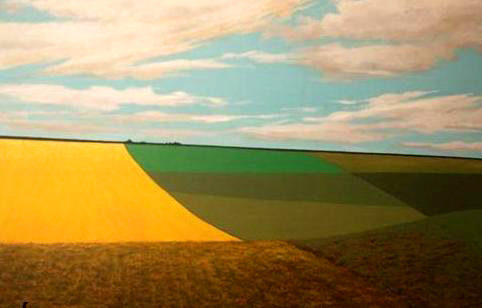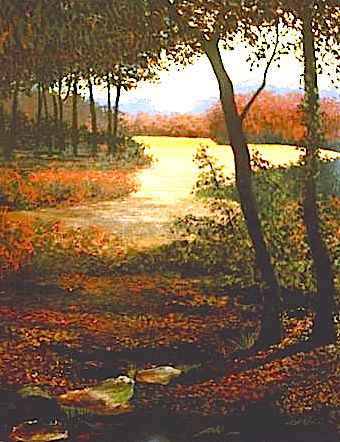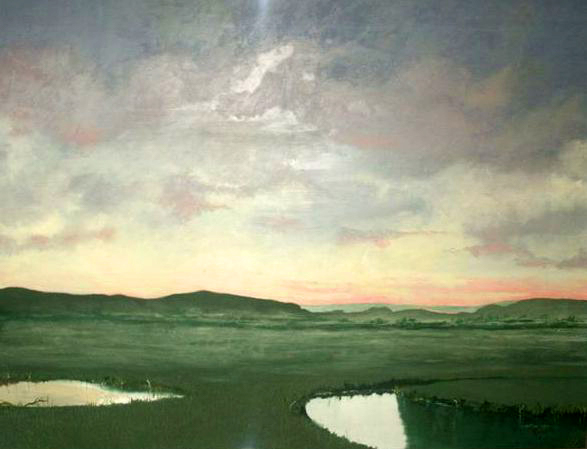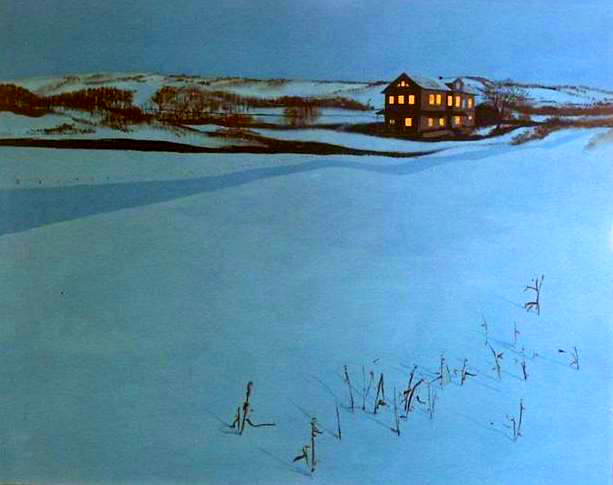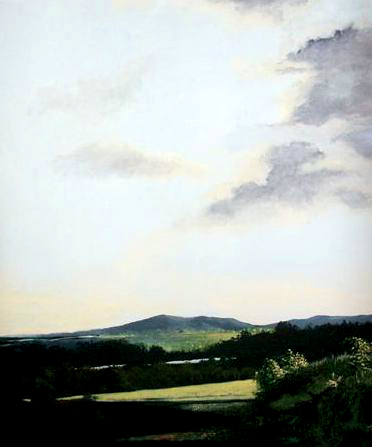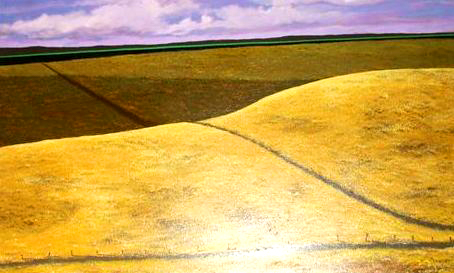
The Indiana Years
Robert Curtis Wilson was born in Sullivan, Indiana on September 3, 1926.
 On Growing up in rural Indiana: “From the time I was old enough to run and hide, I played outside as much as possible. Most boys liked the outdoors, but the call of the fields, streams and woodlands was doubly strong for me. Outside, I was free to romp and play in any way I saw fit, free from the grasp of my mother and grandmother. I roamed the fields and forests freely with only my dog, Buddy, for a companion. He was my best friend and he knew all of my secrets. We were so close, that it was difficult to remember that he was a dog. Had I been asked at the time to choose between my mother, my grandmother, and Buddy, I would have had to think on that a while.”
On Growing up in rural Indiana: “From the time I was old enough to run and hide, I played outside as much as possible. Most boys liked the outdoors, but the call of the fields, streams and woodlands was doubly strong for me. Outside, I was free to romp and play in any way I saw fit, free from the grasp of my mother and grandmother. I roamed the fields and forests freely with only my dog, Buddy, for a companion. He was my best friend and he knew all of my secrets. We were so close, that it was difficult to remember that he was a dog. Had I been asked at the time to choose between my mother, my grandmother, and Buddy, I would have had to think on that a while.”
 On his Father: “I never knew my father, mother divorced him before I was a year old. All I was ever told was that on the day of my birth, he presented himself at the hospital door leading a pony and a goat and smelling strongly of a particular kind of corn whiskey better known as sour mash. But, rather than think of him as an irresponsible drunkard, in my mind he stands out as a romantic figure, expressing a grand and noble exuberance on the birth of his first, and as it turned out, only son. It took me a long time to recognize the legacy he left me; that being different and perhaps unwilling to fit into the main flow of society was not necessarily a bad thing.”
On his Father: “I never knew my father, mother divorced him before I was a year old. All I was ever told was that on the day of my birth, he presented himself at the hospital door leading a pony and a goat and smelling strongly of a particular kind of corn whiskey better known as sour mash. But, rather than think of him as an irresponsible drunkard, in my mind he stands out as a romantic figure, expressing a grand and noble exuberance on the birth of his first, and as it turned out, only son. It took me a long time to recognize the legacy he left me; that being different and perhaps unwilling to fit into the main flow of society was not necessarily a bad thing.”
On his Grandfather: “I don't remember much about my grandfather except that he claimed to be part Irish, part Scottish and part Cherokee Indian of his mother’s side. When everyone else was headed West, he migrated North from Texas to Sullivan, Indiana, which somewhat explains his terrible habit of playing the guitar and singing cowboys ballads at the top of his voice. Grandfather built our house with his own two hands in 1896. To me, our house was grand in comparison to other in town. But by today’s standards, it was little more than a four-room shanty. We had a parlor, a dining room and two small bedrooms.  The kitchen was in a separate building connected to the main house by a breezeway. There was no indoor plumbing but we did have electricity by the year I was born. Grandfather died when I was three leaving the family without a provider and heavily in debt. It was 1929, the stock market collapsed, and everyone but President Hoover knew we were in the midst of a great financial and spiritual depression.”
The kitchen was in a separate building connected to the main house by a breezeway. There was no indoor plumbing but we did have electricity by the year I was born. Grandfather died when I was three leaving the family without a provider and heavily in debt. It was 1929, the stock market collapsed, and everyone but President Hoover knew we were in the midst of a great financial and spiritual depression.”
 On his Grandmother: "'Mom', as everyone called her, was more like a mother to me than my own mother. While my mother worked as the breadwinner of the family, my grandmother was the one who was always there to comfort me in the daily crisis that shook my world. She was [always there for] me, fed me and wiped up my spilt milk and I loved her fiercely. Even so, If Robert Louis Stevenson’s ‘Long John Silver’ ever had a female counterpart, it was surely my grandmother. No one in their right mind would cross her except for me, and when I did, she sent me out to cut my own switch for a whippin’. Many times, I would return with a flower or a huge thorny tree limb. We would laugh so hard that she couldn’t find it in her heart to deliver my punishment. When that didn’t work, I would run out into the field and sit on the beehives. Not even she dares to catch up with me there.”
On his Grandmother: "'Mom', as everyone called her, was more like a mother to me than my own mother. While my mother worked as the breadwinner of the family, my grandmother was the one who was always there to comfort me in the daily crisis that shook my world. She was [always there for] me, fed me and wiped up my spilt milk and I loved her fiercely. Even so, If Robert Louis Stevenson’s ‘Long John Silver’ ever had a female counterpart, it was surely my grandmother. No one in their right mind would cross her except for me, and when I did, she sent me out to cut my own switch for a whippin’. Many times, I would return with a flower or a huge thorny tree limb. We would laugh so hard that she couldn’t find it in her heart to deliver my punishment. When that didn’t work, I would run out into the field and sit on the beehives. Not even she dares to catch up with me there.”
 On his Mother: “My mother was a heroic figure who everyday re-earned not only my love and affection, but my greatest admiration. The day she learned of her father’s terminal illness, she was 21 years old. It was not until I was about twelve years old that I understood how completely she had sacrificed her own personal happiness to fulfill our needs. Mother had to work 52 hours a week at the local five and dime store. Her salary not only supported me and her parents, but her two sisters and a younger brother. I adored her and was so impressed with the way she faced adversity by taking over the responsibility of supporting the entire family when she herself was at the threshold of her own life.”
On his Mother: “My mother was a heroic figure who everyday re-earned not only my love and affection, but my greatest admiration. The day she learned of her father’s terminal illness, she was 21 years old. It was not until I was about twelve years old that I understood how completely she had sacrificed her own personal happiness to fulfill our needs. Mother had to work 52 hours a week at the local five and dime store. Her salary not only supported me and her parents, but her two sisters and a younger brother. I adored her and was so impressed with the way she faced adversity by taking over the responsibility of supporting the entire family when she herself was at the threshold of her own life.”
 1943-44 Seeking a better job, Robert and his mother moved to Los Angeles, California. Faced with the certainty of being drafted when he turned 18 and not yet having completed his high school education, he decided to return to Sullivan to earn his high school diploma.
1943-44 Seeking a better job, Robert and his mother moved to Los Angeles, California. Faced with the certainty of being drafted when he turned 18 and not yet having completed his high school education, he decided to return to Sullivan to earn his high school diploma.

On His Schooling: “I knew that if I were to become a reasonably productive person in life that I would have to finish high school. [Otherwise] be drafted with the possibility of never receiving a diploma.”
On the value of an education: “ I doubt that I would have never understood what an education could be if it weren't for my sophomore English teacher Miss Amelia Powell. I liked most of my teachers and despite the fact that throughout most of my school years I was a bit of a troublemaker, they seemed to like me...except for Miss Minnie Lyons who must have paddled my butt everyday in the third grade and Lord knows, I did deserve it. But, Miss Powell was different. She made her subject so fascinating you couldn’t help but become involved, and yet, she set her expectations just challenging enough that you were forced to exert some mental effort to succeed.”
Robert returned to Indiana, to finish his education, supporting himself by working at the local chicken plucking factory. After graduation he was drafted into the European division of the Army and was discharged at the end of the war in 1947.
Sullivan County Library Collection


 On Growing up in rural Indiana: “From the time I was old enough to run and hide, I played outside as much as possible. Most boys liked the outdoors, but the call of the fields, streams and woodlands was doubly strong for me. Outside, I was free to romp and play in any way I saw fit, free from the grasp of my mother and grandmother. I roamed the fields and forests freely with only my dog, Buddy, for a companion. He was my best friend and he knew all of my secrets. We were so close, that it was difficult to remember that he was a dog. Had I been asked at the time to choose between my mother, my grandmother, and Buddy, I would have had to think on that a while.”
On Growing up in rural Indiana: “From the time I was old enough to run and hide, I played outside as much as possible. Most boys liked the outdoors, but the call of the fields, streams and woodlands was doubly strong for me. Outside, I was free to romp and play in any way I saw fit, free from the grasp of my mother and grandmother. I roamed the fields and forests freely with only my dog, Buddy, for a companion. He was my best friend and he knew all of my secrets. We were so close, that it was difficult to remember that he was a dog. Had I been asked at the time to choose between my mother, my grandmother, and Buddy, I would have had to think on that a while.” On his Father: “I never knew my father, mother divorced him before I was a year old. All I was ever told was that on the day of my birth, he presented himself at the hospital door leading a pony and a goat and smelling strongly of a particular kind of corn whiskey better known as sour mash. But, rather than think of him as an irresponsible drunkard, in my mind he stands out as a romantic figure, expressing a grand and noble exuberance on the birth of his first, and as it turned out, only son. It took me a long time to recognize the legacy he left me; that being different and perhaps unwilling to fit into the main flow of society was not necessarily a bad thing.”
On his Father: “I never knew my father, mother divorced him before I was a year old. All I was ever told was that on the day of my birth, he presented himself at the hospital door leading a pony and a goat and smelling strongly of a particular kind of corn whiskey better known as sour mash. But, rather than think of him as an irresponsible drunkard, in my mind he stands out as a romantic figure, expressing a grand and noble exuberance on the birth of his first, and as it turned out, only son. It took me a long time to recognize the legacy he left me; that being different and perhaps unwilling to fit into the main flow of society was not necessarily a bad thing.” The kitchen was in a separate building connected to the main house by a breezeway. There was no indoor plumbing but we did have electricity by the year I was born. Grandfather died when I was three leaving the family without a provider and heavily in debt. It was 1929, the stock market collapsed, and everyone but President Hoover knew we were in the midst of a great financial and spiritual depression.”
The kitchen was in a separate building connected to the main house by a breezeway. There was no indoor plumbing but we did have electricity by the year I was born. Grandfather died when I was three leaving the family without a provider and heavily in debt. It was 1929, the stock market collapsed, and everyone but President Hoover knew we were in the midst of a great financial and spiritual depression.” On his Grandmother: "'Mom', as everyone called her, was more like a mother to me than my own mother. While my mother worked as the breadwinner of the family, my grandmother was the one who was always there to comfort me in the daily crisis that shook my world. She was [always there for] me, fed me and wiped up my spilt milk and I loved her fiercely. Even so, If Robert Louis Stevenson’s ‘Long John Silver’ ever had a female counterpart, it was surely my grandmother. No one in their right mind would cross her except for me, and when I did, she sent me out to cut my own switch for a whippin’. Many times, I would return with a flower or a huge thorny tree limb. We would laugh so hard that she couldn’t find it in her heart to deliver my punishment. When that didn’t work, I would run out into the field and sit on the beehives. Not even she dares to catch up with me there.”
On his Grandmother: "'Mom', as everyone called her, was more like a mother to me than my own mother. While my mother worked as the breadwinner of the family, my grandmother was the one who was always there to comfort me in the daily crisis that shook my world. She was [always there for] me, fed me and wiped up my spilt milk and I loved her fiercely. Even so, If Robert Louis Stevenson’s ‘Long John Silver’ ever had a female counterpart, it was surely my grandmother. No one in their right mind would cross her except for me, and when I did, she sent me out to cut my own switch for a whippin’. Many times, I would return with a flower or a huge thorny tree limb. We would laugh so hard that she couldn’t find it in her heart to deliver my punishment. When that didn’t work, I would run out into the field and sit on the beehives. Not even she dares to catch up with me there.” On his Mother: “My mother was a heroic figure who everyday re-earned not only my love and affection, but my greatest admiration. The day she learned of her father’s terminal illness, she was 21 years old. It was not until I was about twelve years old that I understood how completely she had sacrificed her own personal happiness to fulfill our needs. Mother had to work 52 hours a week at the local five and dime store. Her salary not only supported me and her parents, but her two sisters and a younger brother. I adored her and was so impressed with the way she faced adversity by taking over the responsibility of supporting the entire family when she herself was at the threshold of her own life.”
On his Mother: “My mother was a heroic figure who everyday re-earned not only my love and affection, but my greatest admiration. The day she learned of her father’s terminal illness, she was 21 years old. It was not until I was about twelve years old that I understood how completely she had sacrificed her own personal happiness to fulfill our needs. Mother had to work 52 hours a week at the local five and dime store. Her salary not only supported me and her parents, but her two sisters and a younger brother. I adored her and was so impressed with the way she faced adversity by taking over the responsibility of supporting the entire family when she herself was at the threshold of her own life.”


